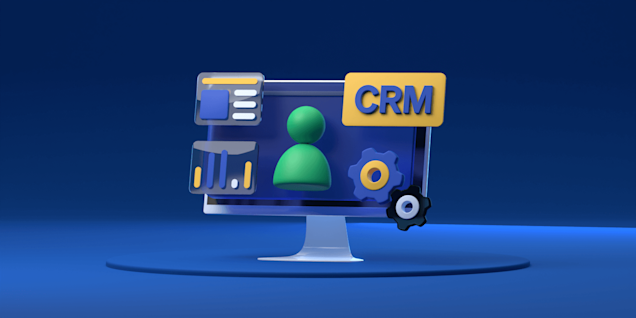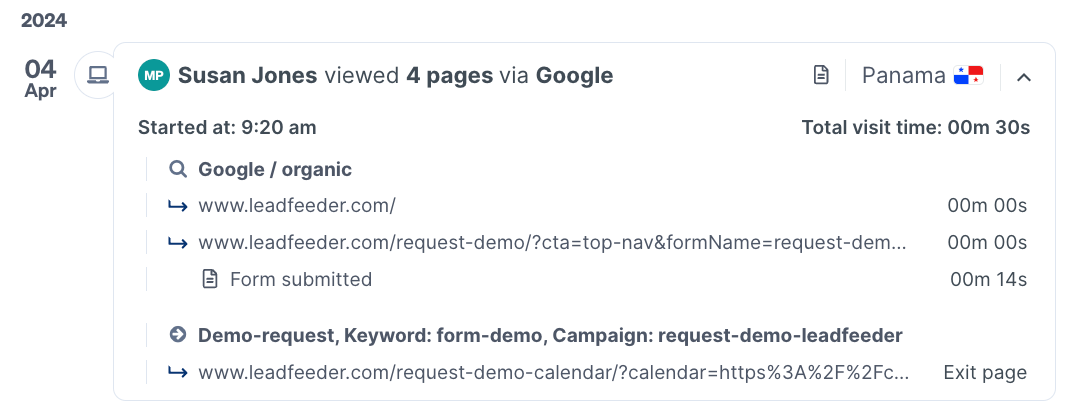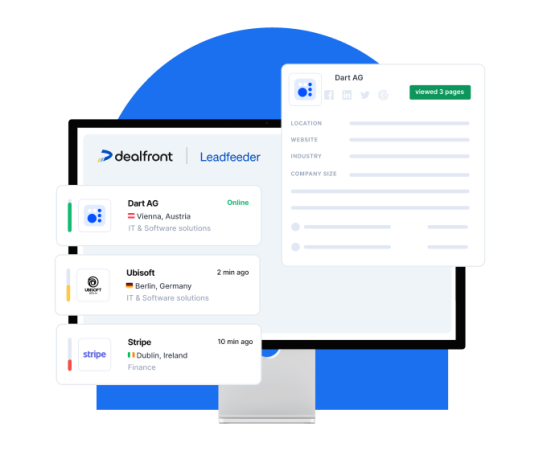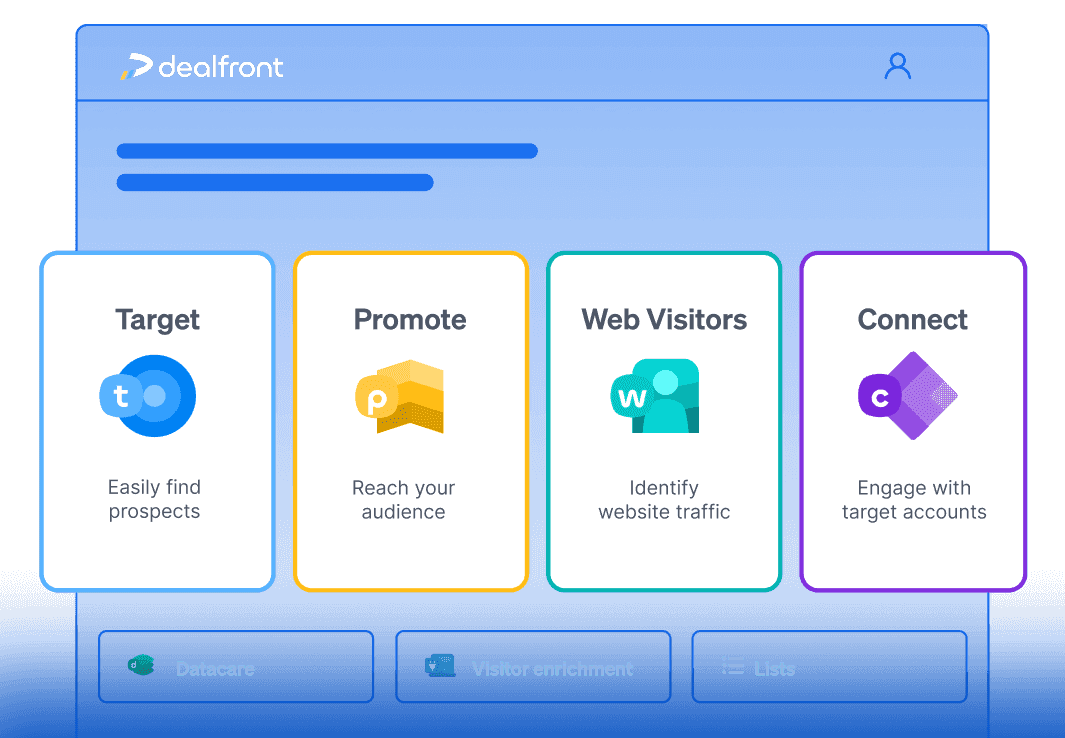Knowing which companies are visiting your website is increasingly becoming essential for many sales and marketing teams. Having the data is the basic first step, but how can you turn that data into something actionable?
In this article we’ll explore the different ways an integration between your CRM and your website visitor identification software can be invaluable.
CRMs are the backbone of many companies - they are where you keep records of customer interactions, hold the most up to date customer contact details and track what stage of the opportunity you’re at. They’re invaluable for growing and maintaining customer relationships and can really add to your customer lifetime value.
Integrating your website visitor data with your CRM is a game changer for sales and marketing teams. Sales teams can spend less time on sourcing new leads and doing admin, and more time doing what they do best, selling. Marketing teams can achieve much greater visibility over the entire prospect and customer landscape.
We know how tricky it can be to add another software into the mix. That’s why, to make life easier all round, our integrations connect your website visitor identification data from Leadfeeder by Dealfront, directly with your CRM. Even better, our CRM integrations sync data in both directions, putting us ahead of much of the competition out there! Not only can you push your Leadfeeder data to your CRM, but you can also see the CRM status of your web visitors within Leadfeeder, and use this data within the app.
In this article we’ll explore all the strategic ways sales and marketing teams can enhance their customer interactions, targeting efforts and ultimately boost conversion rates, with the intelligent use of CRM integration.
Why Use Leadfeeder to Reveal Your Website Visitor Data
Dealfront offers website visitor identification through the Leadfeeder product. Leadfeeder is a simple-to-use app with an effective set of core features, all designed to help you get the most out of knowing which companies are visiting your website. We’ve briefly highlighted some of the key features below.
Powerful filtering features
The many filtering possibilities within Leadfeeder enable you to segment your visitors by creating custom feeds. The 50+ filters can be mixed and matched to both profile the visitors coming to your site and highlight buying intent.
There are 6 types of custom feeds to choose from: Behaviour, Acquisition, Company info, Dealfront activities, CRM activities and Email marketing integrations.
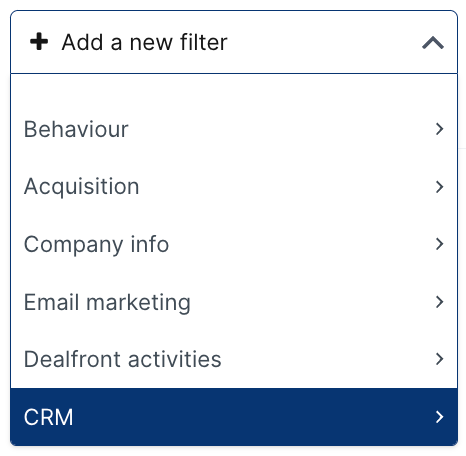
Leadfeeder filters
Alerts in real-time
Our tracking code pulls data in near real time, so companies appear in the app in almost real-time. Email or Slack notifications can help you react quickly to when certain companies are visiting your website or taking a specific action.

Custom Feed Automation
Integrate with your CRM
Dealfront seamlessly links your website visitor data from Leadfeeder with several leading CRMs. This connection enables you to add newly identified companies into your CRM, and to keep track of the activity of your existing open and lost deals.
The CRMs we support are: Pipedrive, Salesforce, Microsoft Dynamics 365, HubSpot and Zoho. if your CRM isn’t listed, you may be able to use Zapier instead.
Your Sales Strategy and CRM Integration
First up we’ll look at the different ways CRM integration with visitor identification software can supercharge your sales strategy.
1. Fill up the top of the funnel
A majorly time-consuming task in a sales professional’s day is sourcing net new leads - meaning companies and contacts which were previously unknown to the business. As a manual task, this is heavily time consuming; with web visitor identification software, it’s immensely quicker! Plus, these are warm leads, they’ve heard of you because they’ve actively viewed your website. You’re not just sourcing cold leads that have never heard of your product or service before.
With CRM integration, Leadfeeder first looks to see if a company visiting your website is already in your CRM. If they are, they are tagged with an integration icon (matching the logo of your connected CRM).

Connected to HubSpot
If they’re not, they’re a potential warm net new lead! You want to be able to find these new leads quickly though - scrolling through a long list is not the way - this is where custom feeds come in. Instead of browsing one of the default feeds of companies, you can make your own based on our filters. First off, you need to add ‘Connection to CRM’ as ‘is not Connected’, as well as ‘is not Awaiting user confirmation’.
Then choose some qualities or actions that make leads worth pursuing. Simple filters include number of visits, company industry, number of employees, or you can get more in-depth and filter by the device type, video viewed or form filled out. Or filter for high intent pages, such as pricing or solution deep dives.
The number of companies you see depends on the type of business you operate. If you’re a high volume, low value product you might see a higher quantity of companies than a low volume, high value solution.

You now have an easy to access list of pre-qualified companies, or warm leads, who are ready to be connected to your CRM. It’s possible to automatically add every new company in this feed to your CRM by setting up a feed automation. You can configure this automation to add every new company that enters this feed to your CRM, attached to an owner of your choosing. You can also automate creating new deals or tasks (or equivalent terminology depending on the CRM you use) when you push each company to your CRM.

If you’d rather review each company before pushing them to your CRM you can do this manually in a few clicks. You can still select who should be the owner of the new company, and decide whether or not to send previous visits, as well as new visits, to your CRM.

Once the company has been connected, new Tasks and Deals can then be created, all from directly within Leadfeeder. You can set up as many custom feeds as you like, per sales person or account manager if they cover separate regions or industries, for example.
Regardless of which method you use, CRM integration removes the need to manually input data from one screen to another, filling up the top of your funnel with fresh, warm leads fast!
2. Increase your response rates with personalized outreach
The data captured from the companies visiting your website can inform a more streamlined and personalized sales process, leading to better response rates. Once your Leadfeeder setup is complete and automated there should be no barriers to adoption by your sales team.
For every company identified as having visited your website, they can access all the website activity from directly within your CRM, with no need to switch apps.

Website visitor data can influence when to outreach, what sales cadence to use or what resources to share. It can also help to determine how interested that company may be in your product or service and therefore how much effort to put in.
What can you infer from your visitors’ actions? As an example, we can look at frequency and pages viewed. If there are multiple different visitors coming from one company, landing on the same or similar pages, that could mean the wider buying committee are all exploring your offering. If there’s one repeated visitor to a few varied pages, they may still be in the early discovery stages, or be a smaller deal.
Armed with this knowledge you can prioritize your leads and focus where to put your energies first to get those conversations started.
3. Beat the race against your competition
Your prospects are likely reviewing multiple different vendors at any one time, so being quick to react is vitally important. Having seamless connectivity between your CRM and website visitor data can help you to win!
Our integration recognises visiting companies based on their stage or status. To beat the competition, you want to know what your open deals are up to.
You can also add email automation to custom feeds. This can be set to send an email every time a new company appears in your feed. The email recipient can be any email address of your choosing, so your own, one of your internal sales team, or external business development professionals.
To achieve this, you need to create a custom feed using the ‘CRM Deal Status’ filter of ‘at least one is Open’. You can then add a secondary filter for ‘CRM Company Owner’ to only notify each individual sales person about their own open deal activity.
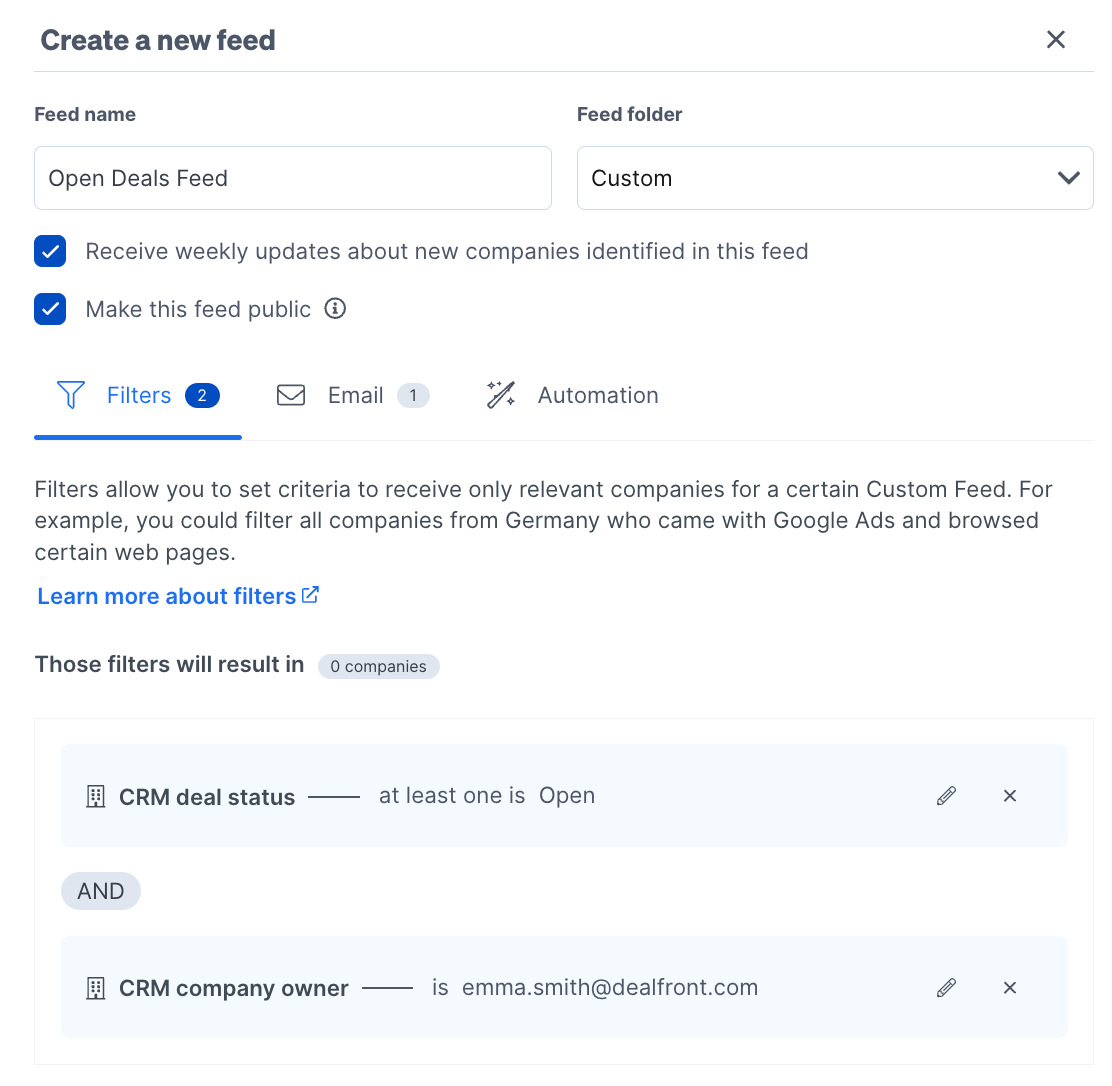
Open Deals Feed
Getting these near instant notifications can give you the edge over your competition, helping to both prioritize which accounts to spend the most time on and knowing when to reach out.
4. Win back lost deals
Wouldn’t you like to know if your lost deals are still checking out your website, and what they’re doing on there? Maybe the grass wasn’t greener on the other side, and they feel they made the wrong choice of supplier. Or maybe you’ve launched a new feature which they’re super interested in.
With your website visitor data integrated with your CRM, as well as tracking your open deals, you can also see the activities of your lost deals.
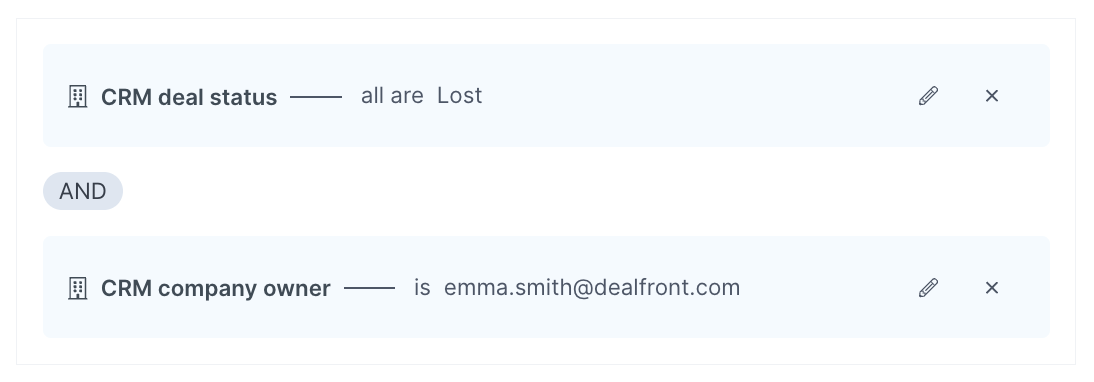
Lost Deals Filter
Time flies and contract terms aren’t typically that long, so while you might have lost the deal the first time around, if you spot a highly engaged lost prospect on your website and their intent looks strong, it could be worth reaching out again.
5. Upsell to existing customers
We all know how much opportunity there is in upselling to your existing customers. With CRM integrated web visitor identification, this strategy can become even more valuable.
In Leadfeeder you can not only see which companies are connected to your CRM, but you can filter by the CRM lifecycle stage of ‘Customer’ deal status. You can then apply additional filters, looking for key upsell markers, perhaps visits to a new product launch landing page, and save this search as a custom feed for upsell opportunities. If you’d like to highlight existing customer visits in a more visible way, you can also apply tags to companies, so their status can be instantly see regardless of which feed they appear in.

Customer and Upsell Tags
Make the most of your existing, hard-earned relationships by putting more strategic focus into your current customer base through web visitor identification.
Maximize Your Marketing Efforts with CRM integration
The partnership of CRM data and website visitor identification is a marketer’s dream come true. Integration can transform generic marketing campaigns into highly converting strategic assets with laser-focused targeting,
1. Analyze Customer Behavior
Gaining a deep understanding of customer behavior is critical to retaining customers and winning new ones.
Your CRM, combined with your website visitor data, holds a wealth of information about how your customers behave. You can use this knowledge to improve engagement, promote cross-sells, and personalize services.
In Leadfeeder you can set up a custom feed using CRM specific filters such as: CRM deal status (Won or Lost) and CRM deal value. You can then explore the activities taken by your web visitors who meet this criteria, and any more you choose to set. Once you’ve explored the web activity, you can compare and contrast this to the logged activity in your CRM, for example time between initial call and final demo.
You might look at:
How you acquired the customer. Can you see any correlations to customers who viewed a lot of web pages, filled out a form and had multiple calls pre-purchase? Are they more likely to place a renewal, for example, compared to a customer who bought with no sales contact? This information could lead to an overhaul in your sales process, or a re-design of your website, depending on the outcome.
![Form fill activity in Leadfeeder]()
Form Fill Activity
Why a customer was lost. Is it recorded in your CRM why they were lost? If it was to a competitor, for example, can you see any similarities in website behavior between these specific lost deals? You could use this new found information to run re-engagement campaigns.
How the customer is using your product. This is mainly applicable for digital products where you track usage, rather than ‘sales website’ tracking. Can you see which features of your product or app your customers use the most, or use the least - do you need to run any education campaigns or product tours?
How the customer interacts with you on an ongoing basis. Which of your customers engage with your online resources? Once they’ve purchased do they ever come back, or is your website a pre-sales tool only - is that the intention?
There’s a lot to unpack and explore in the combination of CRM data and website visitor activity, but integration of the two can help the process.
2. Craft highly targeted campaigns
Associating website behaviors with specific companies who exist in your CRM can skyrocket your ability to create effective targeted campaigns. Whether this is personalizing on-site content or delivering in-person custom gifts, your marketing efforts need no longer be a shot in the dark. Every activity you plan can be strategically aligned with your customer needs and behaviors.
If you also set up custom feeds to filter by specific actions or intent signals you’ll be able to further segment your audience. You can then add these companies to a list to continue building your campaign from there. Dealfront’s Promote enables you to place highly targeted brand or product awareness B2B display ads in front of a chosen list of companies. Such specific targeting can both improve the efficiency of your ads, and reduce wasted campaign spend.
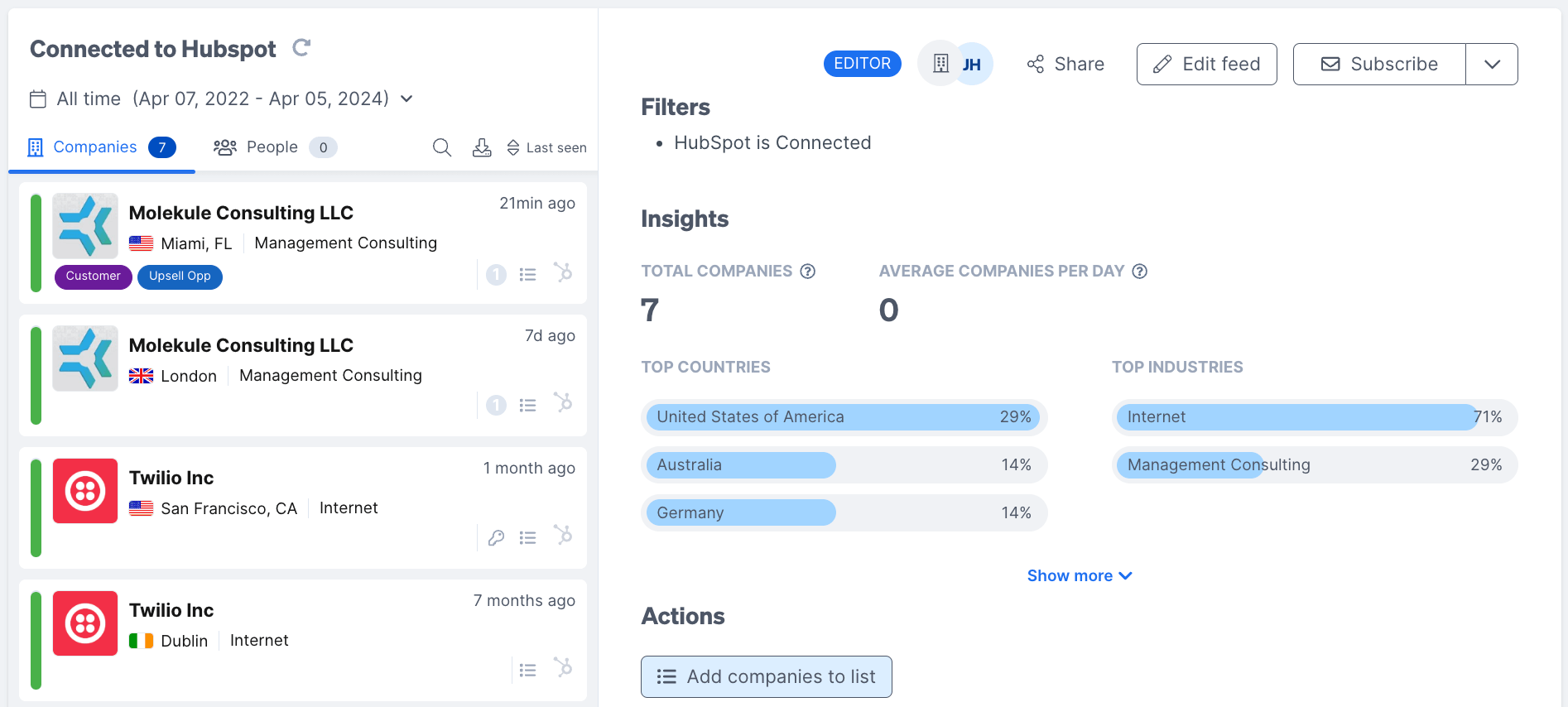
Add Companies to a List
3. Enhance collaboration with sales
This doesn’t take much explanation, but is a hugely valuable benefit to integrating with your CRM. When you’re crafting your campaigns based on website visitor data, you can also check which of these companies are already being targeted by sales and what outreach methods have been used so far. Based on this information you can choose which campaign flow would best suit where they’re at in the process.
Without this connection, marketing would need to first manually check if that company is in the CRM, before knowing if they’re already involved in sales activities.
The goal here is to use the data to work together and avoid duplicating, or even hindering, the efforts of either team.
4. Improving Campaign ROI
Using CRM integration with website visitor data for campaign planning is only the first piece of the puzzle. As well as customer analysis, you can also use it for campaign analysis.
Understanding which campaigns resonate with your audience is crucial. By tracking interactions on your website back to your CRM, you can measure campaign success more accurately and fine-tune future campaigns for even better ROI.
Aside from purely tracking, for example, landing pages, as an added bonus, Dealfront can also integrate with the leading email marketing solutions of Mailchimp and ActiveCampaign. With email integration, as well as CRM integration, you can get a complete picture of your campaign activity.
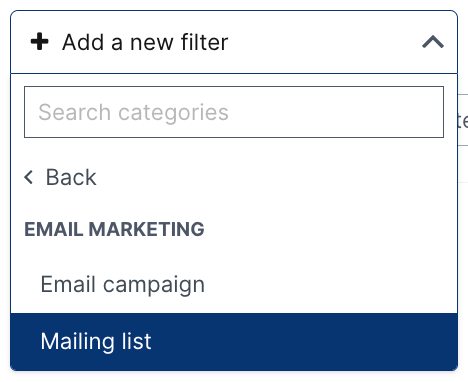
EMS Filters
This level of insight empowers you to optimize every aspect of your strategies, from content to timing.
Turn Data into Action with CRM Integration
In this article you’ve discovered how CRM integration can empower you to actually do something with your website visitor data. It enables you to enhance the customer journey, pushing anonymous website visitors further down the funnel with every interaction and closer to becoming hot prospects and even converting customers.
CRM integration is the key to unlocking the full potential of your website's data and transforming it into impactful sales and marketing strategies. By aligning your sales tactics with seamless data flow and your marketing campaigns with curated customer journeys, you can maximize your efforts and see significant returns on investment.
If you’re not a Leadfeeder user, you can sign up for a free 14-day trial in minutes. You’ll find everything you need to know about getting started with Leadfeeder in our dedicated Help Center Collection.
